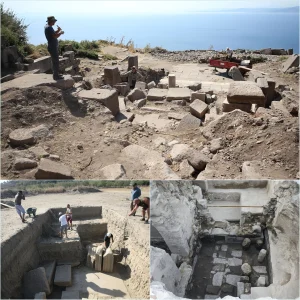
Nearly 1,200 years ago, the Mediterranean Sea submerged the city of Heracleion off Egypt’s coast. Once a major commercial hub, Heracleion had faded into legend, much like the mythical Atlantis. However, in 2000, underwater archaeologist Franck Goddio uncovered this lost city during extensive explorations in Aboukir Bay.

Before this discovery, Heracleion existed only in ancient texts by authors like Strabo and Diodorus. Greek historian Herodotus (5th century BC) recounted that a grand temple was erected in Heracleion when the hero Heracles (also known as Herakles) first arrived in Egypt. Herodotus also claimed that Paris and Helen of Troy visited the city before the Trojan War. Four centuries later, Strabo noted that Heracleion was situated east of Canopus at the Nile River’s mouth.

Franck Goddio, a prominent underwater archaeologist and “pioneer of modern maritime archaeology,” founded the European Institute for Underwater Archaeology (IEASM) in 1987 to explore and document submerged archaeological sites. IEASM employs sophisticated geophysical prospecting techniques, such as mapping anomalies on the seabed to direct further investigation by divers or remotely operated vehicles.

In 1992, IEASM began mapping the area around Alexandria’s port, expanding their search in 1996 to include Aboukir Bay at the Egyptian government’s request. This research was critical in understanding the topography and conditions that led to the submersion of the city. The survey, covering an area of 11 by 15 kilometers (6.8 x 9.3 miles), utilized historical documents to identify key areas of interest.
The mapping process, which began in 1996, took several years. Heracleion was finally discovered in 2000, following the earlier discovery of Canopus in 1999. The city’s ruins were obscured by sediment, accumulated from the Nile’s outflow. Using precise magnetic surveys, the IEASM team located the remnants of Heracleion, providing the evidence needed to confirm its location.





